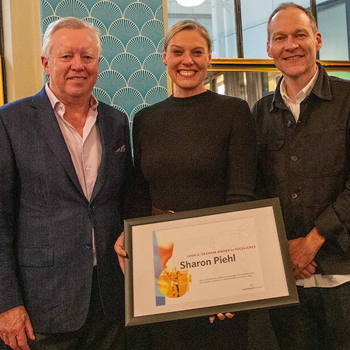The Concept of Measurement Is Often Confused With Counting
When I approached a real estate agent to sell my house, he gave me his terms: 1.5% commission on the final selling price. In this digital day and age, I’m not very fond of that model, because through online catalogues your house virtually sells itself. I wanted more value for my money. So I asked him if he was up for an experiment: “what if I tell you what I ultimately want for my house, yet offer you 5% of every extra Euro you get for it? All you need to do now is decide what asking price you publish.” He agreed.
I accomplished a few things with his. Firstly, I truly engaged him in a project that could profit us both, and secondly I got the rather selfish gratification I made him work for his money. It feels good to be the client! But it also made me think about my own job, and how public relations is valued and rewarded. And to what extent we help our clients get their minds wrapped around the true value of our services.
We, and the entire PR industry, are working very hard to seek new ways to get higher rewards for delivered value. I purposely say delivered, as we still get paid only for perceived value. And the perceived value of our profession is still vastly lower than that of lawyers and management consultants. If we want this to change, it is upon ourselves to make a better business case. One way is to concentrate more on objectives-setting and measurement.
Actually proving the value of communications is complicated. Even if we get it right, many clients aren’t ready for measurement, as their own performance and rewards aren’t based on any metrics either. Also, with the procurement function increasingly taking ownership of negotiations between client and agency, the investment discussion is dominated by cost rather than by value.
In my research on delivering value based on measurement I came across many complicated acronyms, methodologies and processes. Simply read the book “Shoot the puppy” and you’ll know what I mean. But I also bumped into the following statement: “the concept of measurement is often confused with counting,” And that brought a lot of clarity to my own thinking.
For public relations to be recognized and rewarded for delivered value, we need to educate our clients on the true concept of measurement. And the road to measurement begins with objectives. And with asking our clients “why?”
Here’s an illustrative anecdote. When confronting the explorer who first located the wreck of Titanic with the fact that new research had unveiled the ship had gone down even faster than everyone assumed, he replied stoically; “It hit an iceberg and it sank – get over it”. Research, he basically says, should not start without an anterior objective, but more importantly: it shouldn’t stop at delivering observations only. What difference does it make to get confirmation there is a gap between what is, and what should be. The question is, what are you going to do about it? Raise the Titanic?
An objective is a qualitative “thing”. By deciding a measure and a corresponding target, you quantify the objective, and will be able to define how much your efforts contribute to the target. But here’s the catch: as soon as you quantify an objective, your efforts will probably work towards realizing the target, not the objective. But is this target really the best translation of the objective?
This shows it’s really important to engage our clients not only in objectives, but also in discussing and defining targets. Sometimes clients might have “targets” in their head and never think about the objectives behind them (i.e. “give me clippings!”). At other times the client might love to talk about objectives but is unable to agree on specific targets (“we want more loyalty!”).
Anything which you can express in numbers and percentages is quantifiable – and believe me, you can express everything in numbers and percentages if you try to. It’s just a matter of finding (a combination of) the right measures – and if they are achievable; is it in effect possible to reach this goal? And can you influence or control it?”
We all would like to control the weather, but setting targets like “have 25 sunny weeks in England per year” is rather impossible. Alternatively, an Olympic athlete can set a target like “win the gold medal” but how can you possibly control the performance of your competitors? In this case, this target is the objective, and the target would become something like “jump at least 7 centimeters higher than the current world record in 5 out of 7 practice sessions in the month before the games”.
It doesn’t always have to be sophisticated, but there’s absolutely no shortage of options to measure. To name just a few: Abilities, Attitudes, Awareness, Behavior, Confidence, Efficacy, Engagement, Intentions, Knowledge, Participation, Sales, Time and Visibility can all be measured. And most importantly; all of these can be influenced by communications.
True, measurement will often fall back on counting, but if you focus on getting the objectives set properly, you’ll at least have ensured you have something to measure – so that’s where the game really starts. Everytime you have an intake, or discuss a briefing with a client, or analyse an RFP; look through the measurement lense – chances are you will personally improve the assignment and get better results for your client. And both are immensely valuable and rewarding for our industry.
Find Out More
-
Digital Insights Bulletin - October 2024
October 31, 2024
-
Sharon Piehl Wins 32nd Annual John D. Graham Award for Excellence
October 25, 2024
-
Digital Insights Bulletin - September 2024
September 30, 2024


